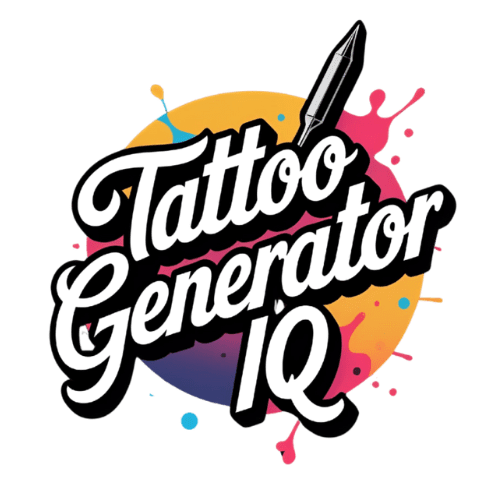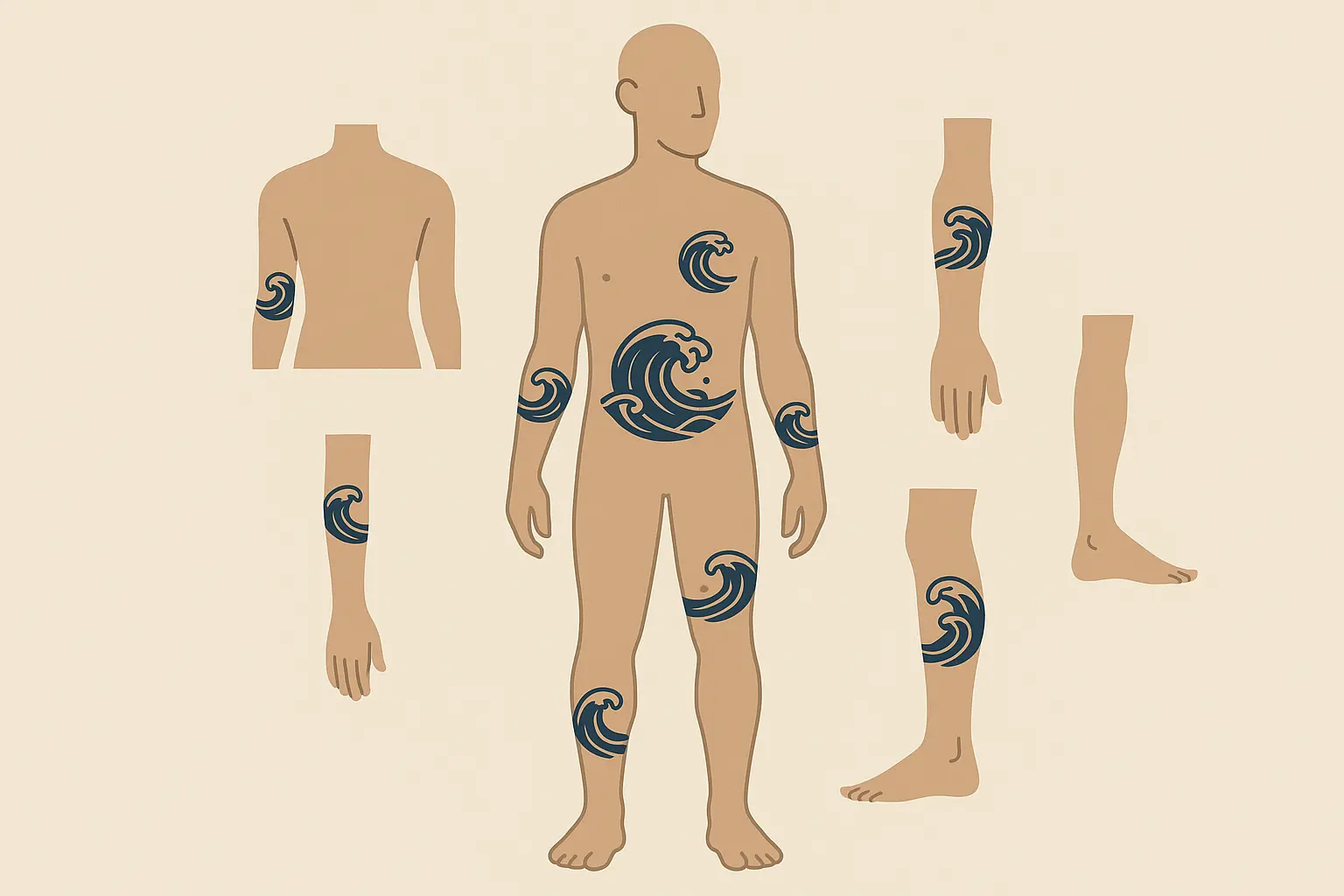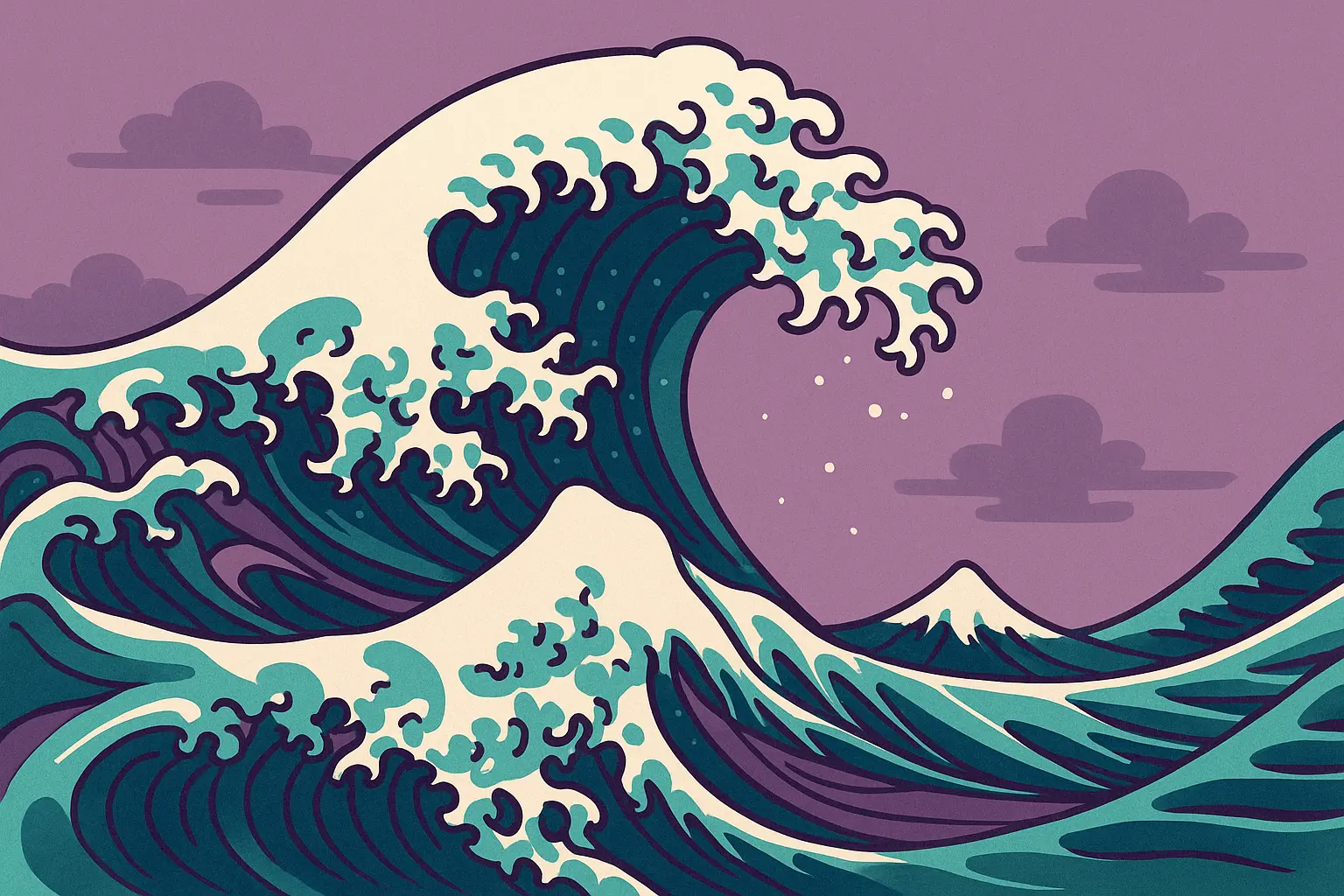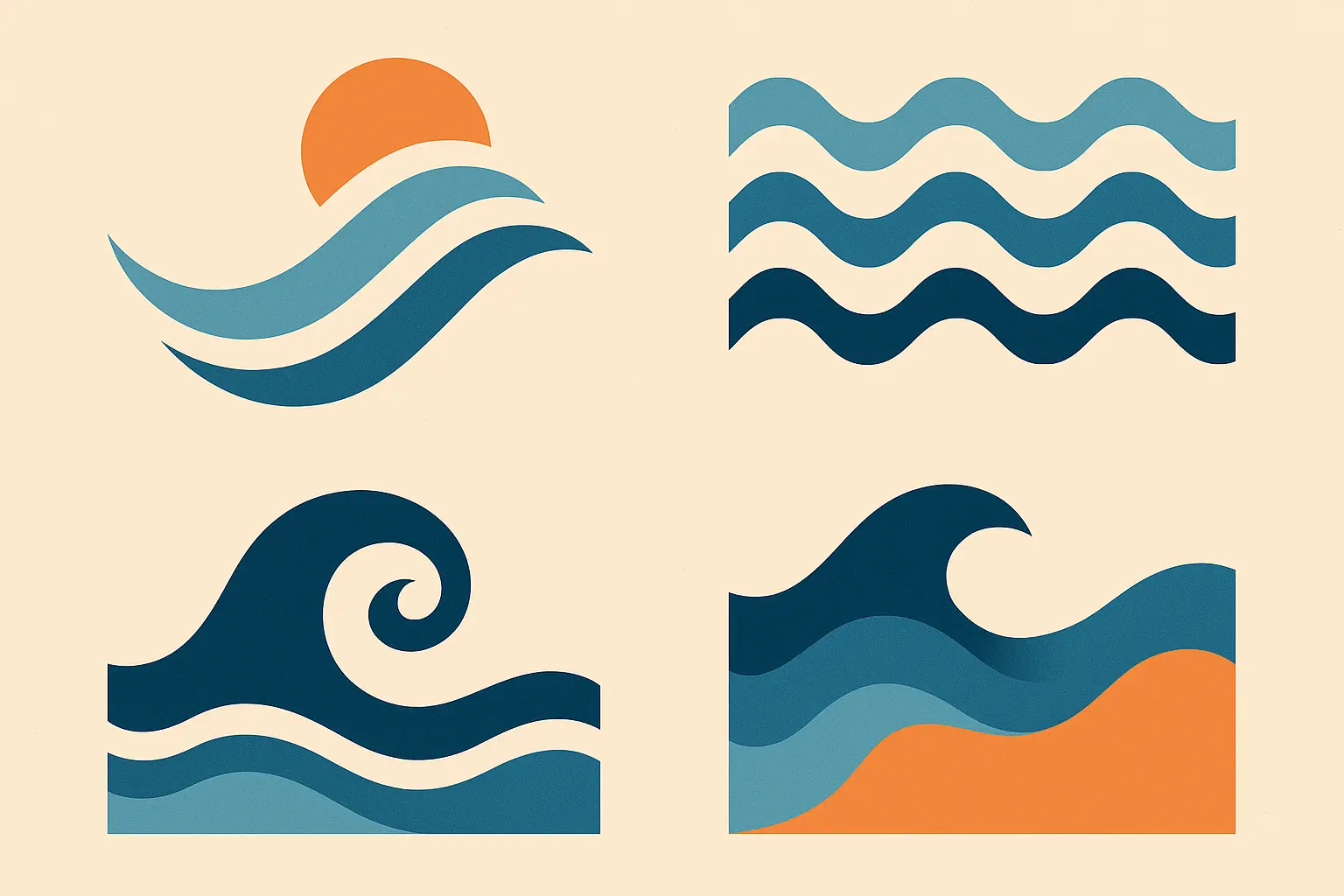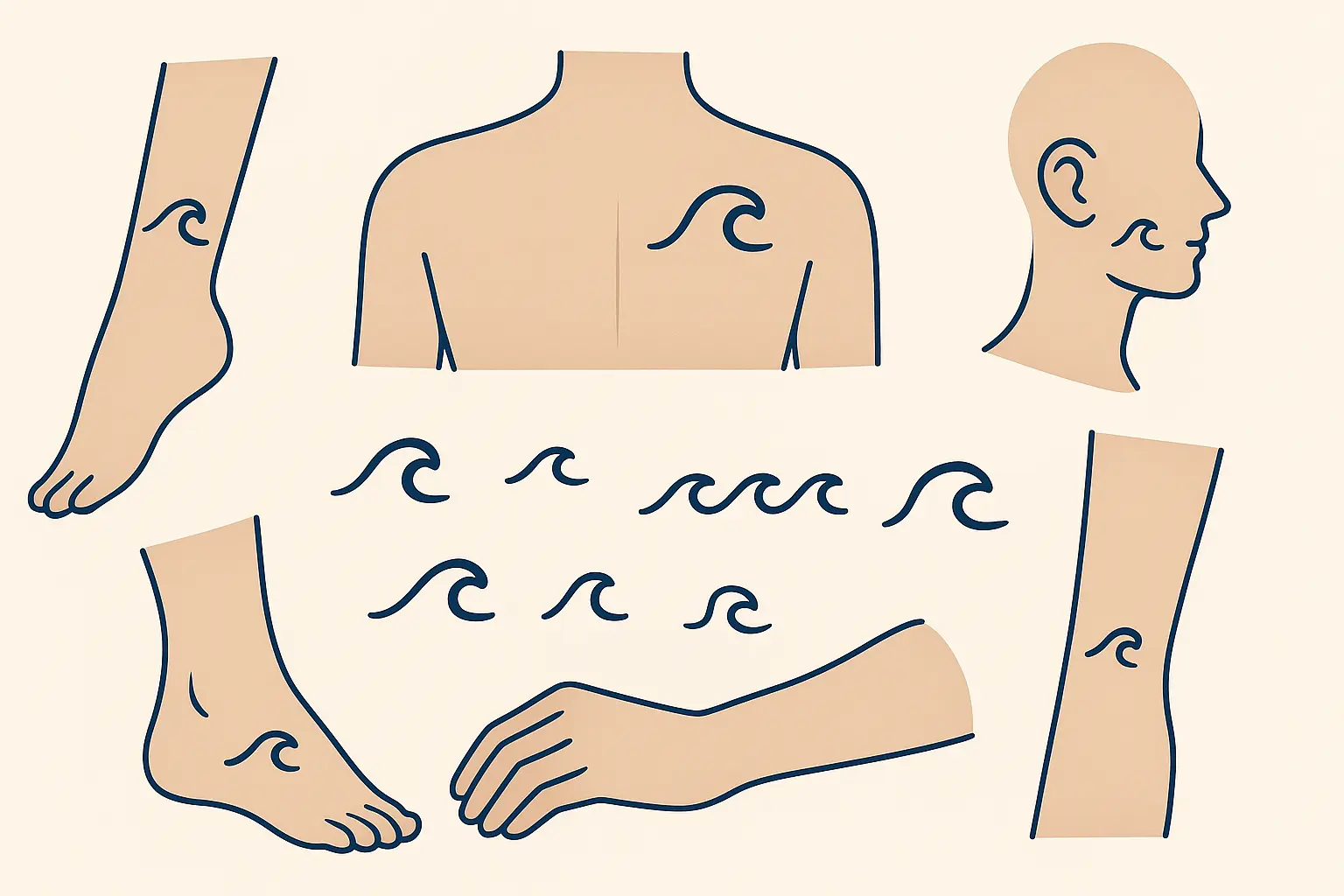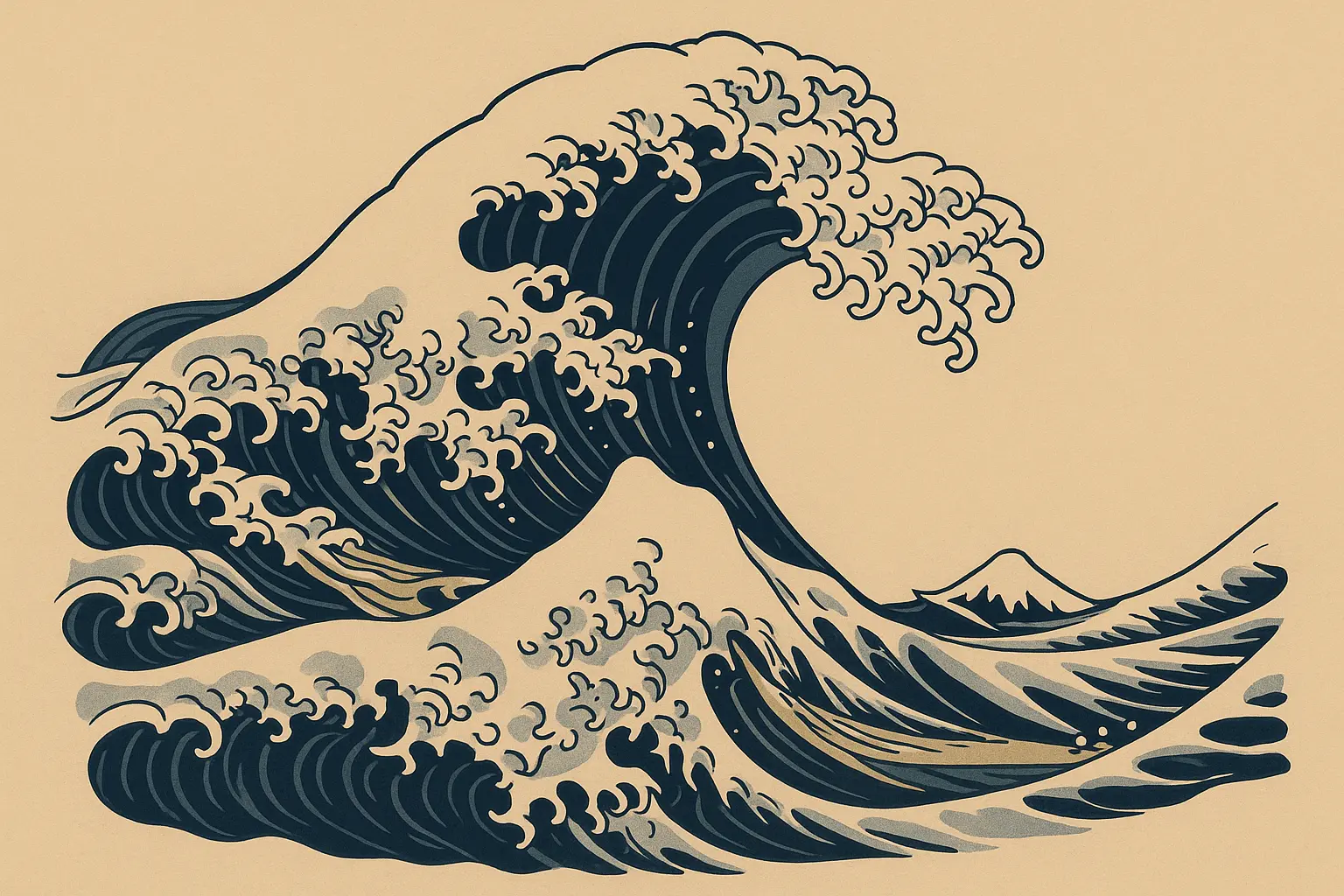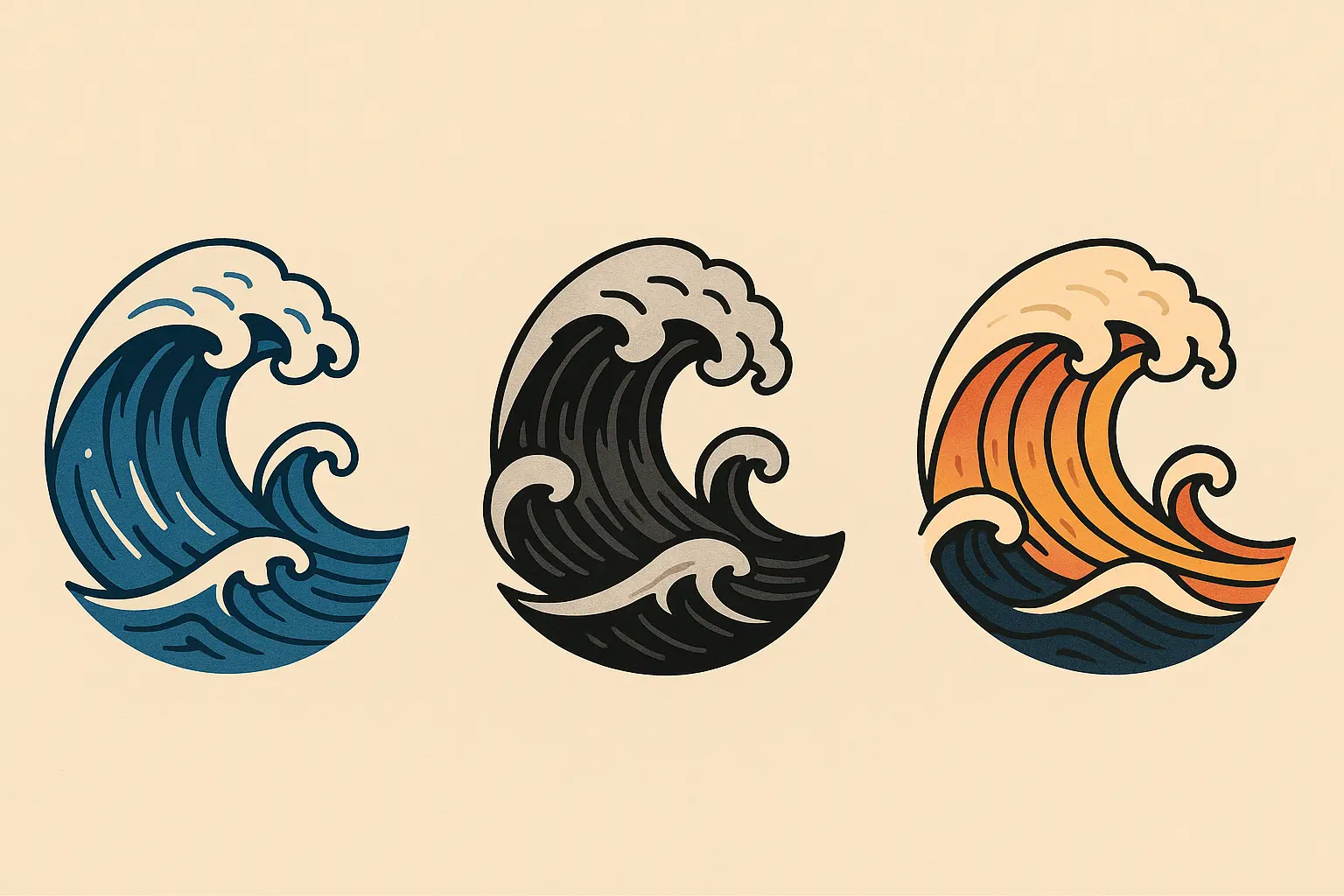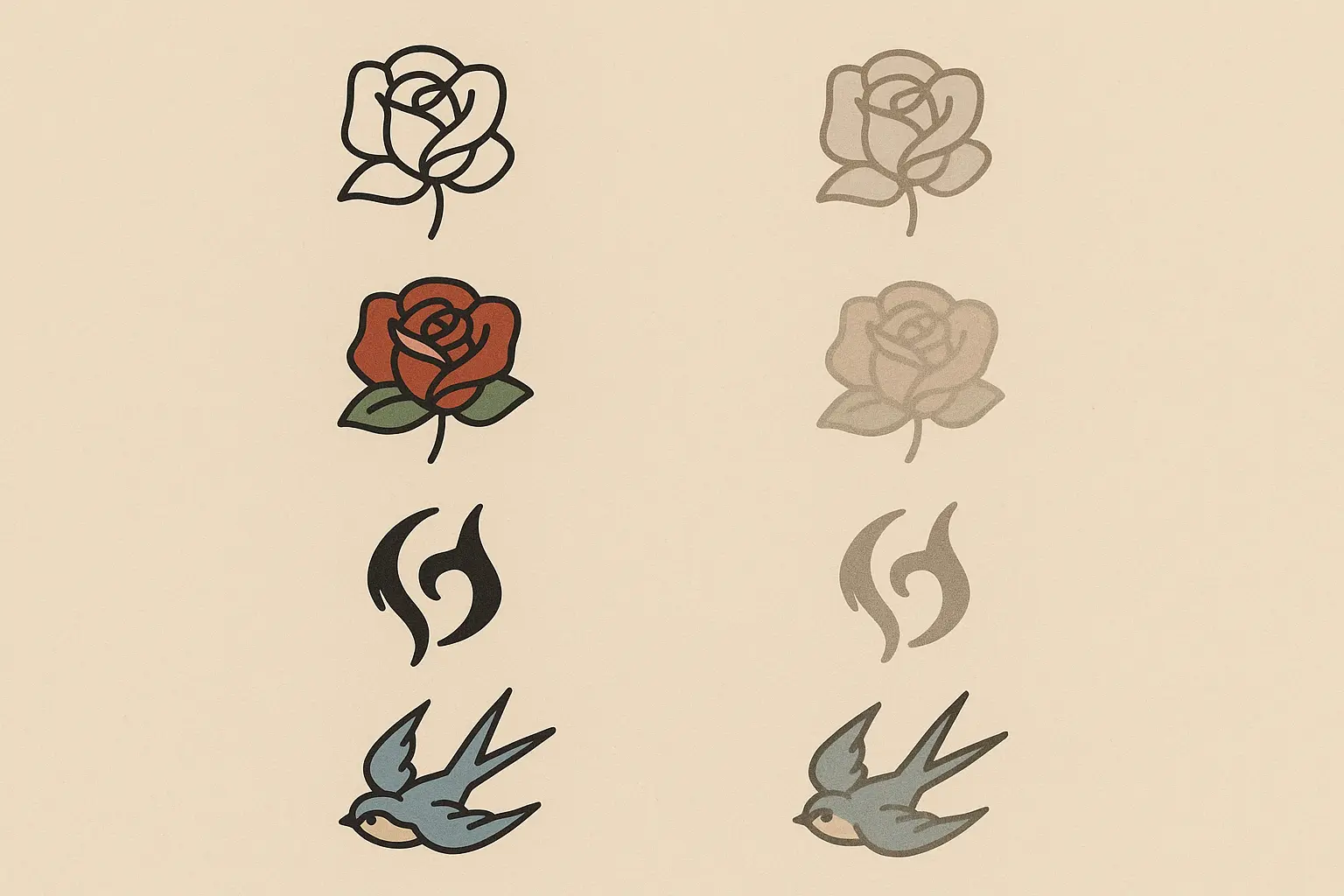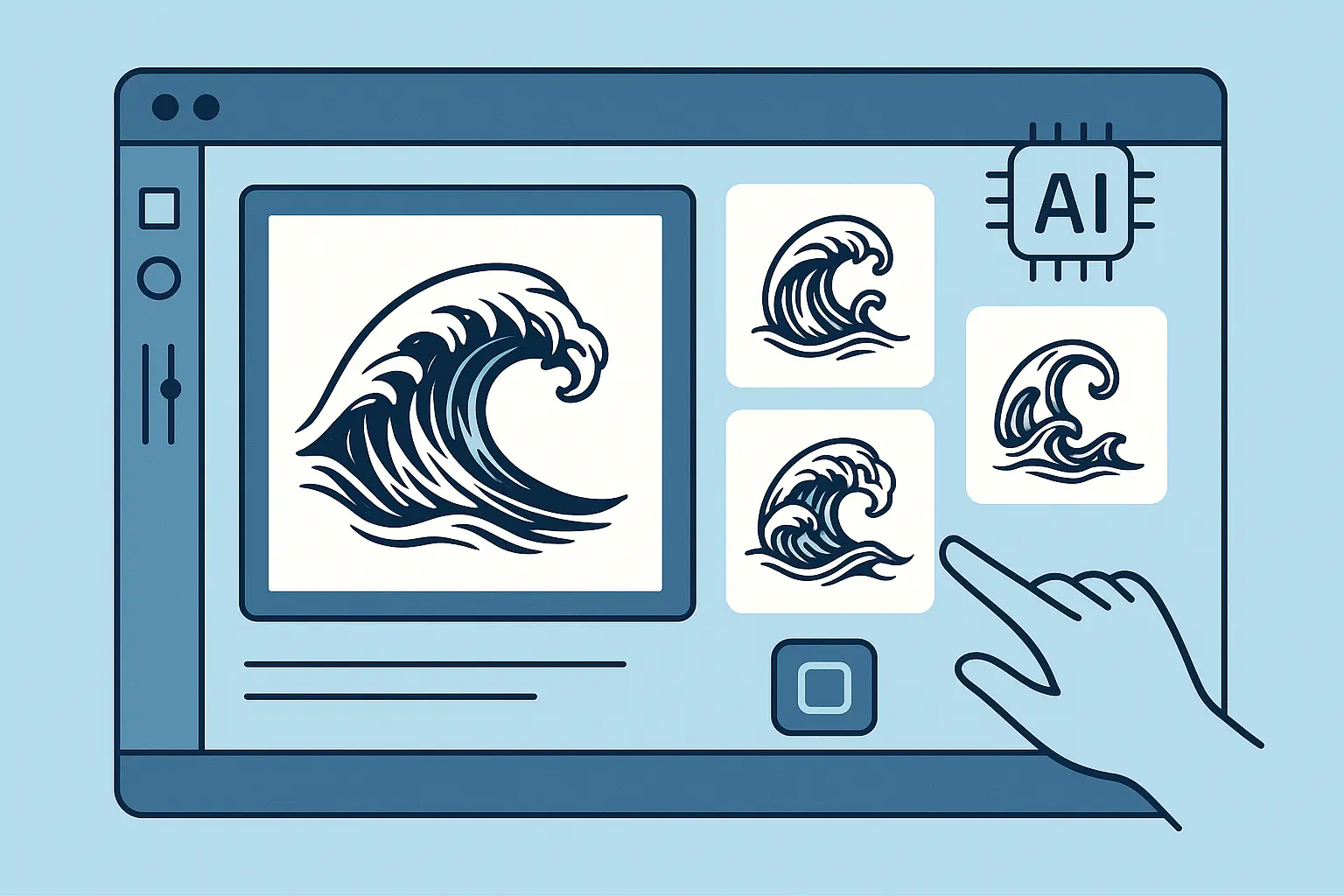25 Japanese Wave Tattoos That Will Make You Want to Book Your Next Session
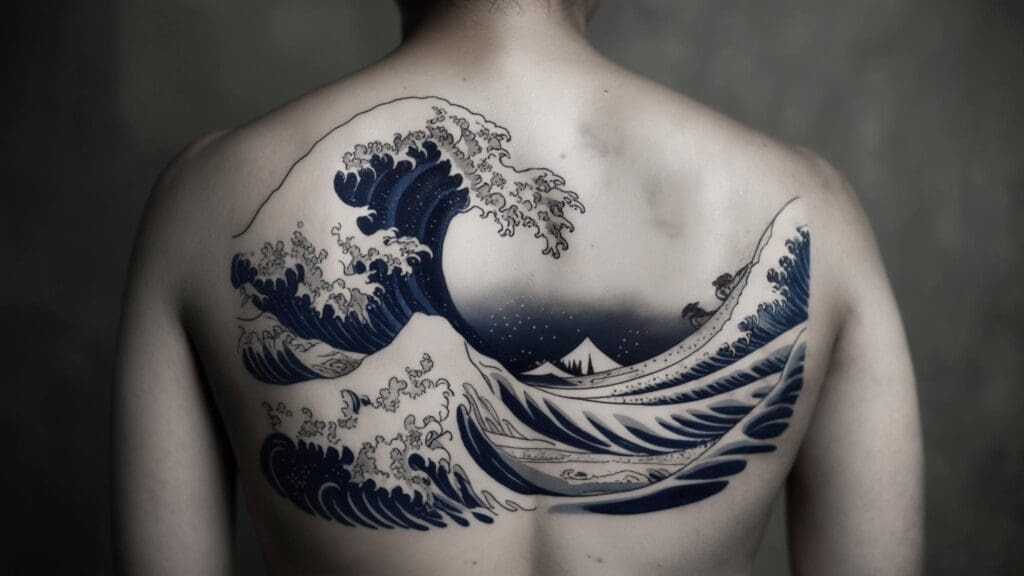
Look, I’ll be honest – Japanese wave tattoos have been everywhere for decades. You’ve probably seen that Hokusai Great Wave poster in half the college dorm rooms you’ve been in (I know I stared at one in my friend’s room for hours, never thinking I’d end up helping people navigate this whole wave tattoo thing). The jump from wall art to body art isn’t just about looks – it’s about understanding what you’re getting into culturally, technically, and for the long haul.
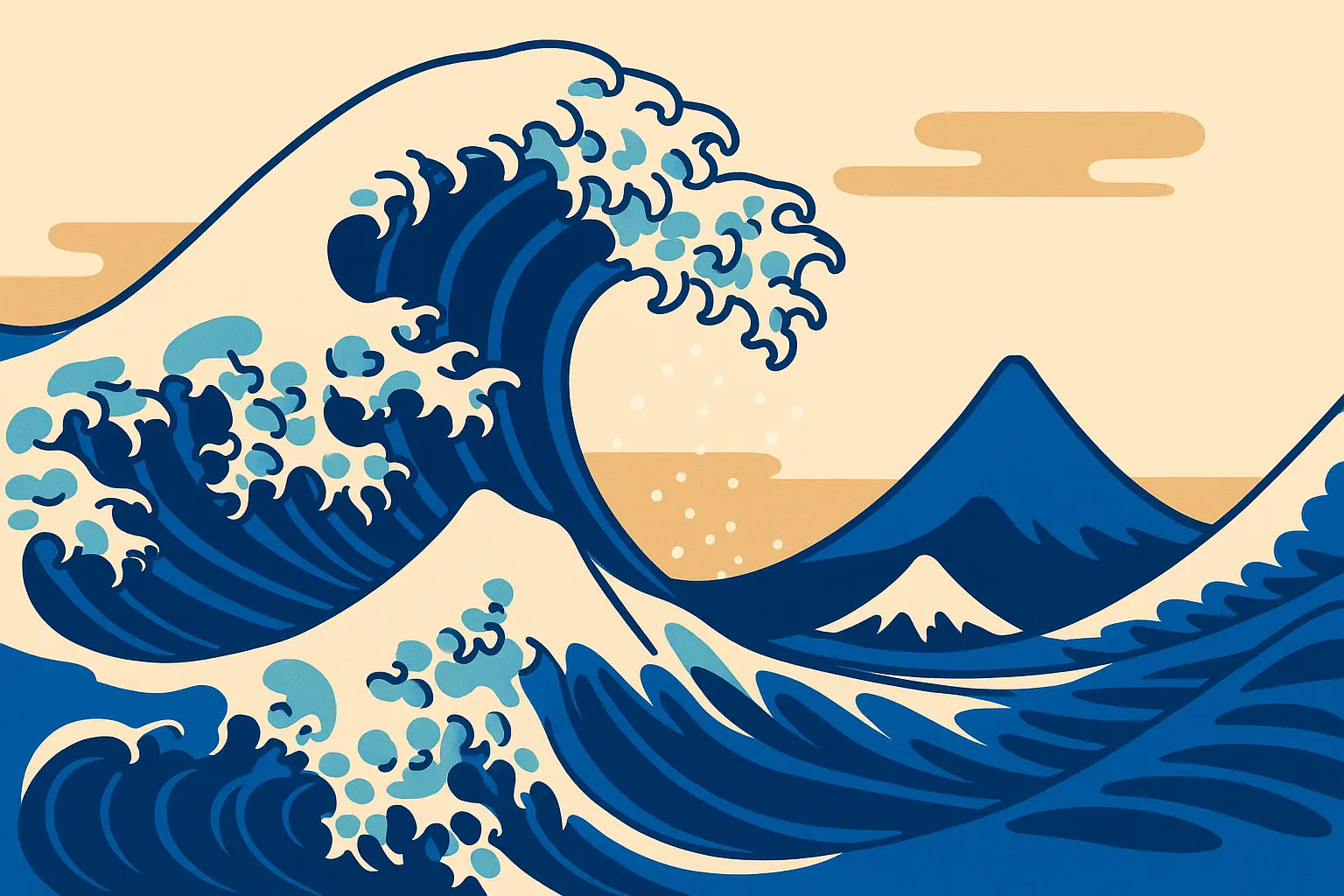
I’ve put together 25 wave designs that really caught my eye across six different styles. We’ll dig into what makes each one work (or not work) for different people. From tiny pieces that fit behind your ear to massive back pieces that’ll have people stopping you on the street, plus all the stuff you need to think about before you commit to any japanese wave tattoos.
Understanding traditional Japanese tattoo design principles will help you get why these flowing designs have such staying power.
Table of Contents
-
What You Need to Know Before Getting Your Wave Tattoo
-
The Classic Waves (Plus Some Modern Twists) – 5 designs
-
Modern Takes and Geometric Styles – 5 designs
-
Small Waves That Won’t Get You Fired – 5 designs
-
Big Statement Pieces That Command Attention – 5 designs
-
Color vs. Black and Gray (The Real Talk) – 5 designs
-
How These Designs Actually Hold Up Over Time
-
How Tattoo Generator IQ Makes This Whole Process Easier
-
Final Thoughts
TL;DR
-
Wave tattoos need serious thought about cultural respect, complexity, placement, and how they’ll age
-
Traditional designs are culturally authentic but need specialized artists and more upkeep
-
Modern versions let you express yourself but might lose some cultural meaning
-
Small minimalist waves work great for professional settings but limit detail
-
Large pieces cost serious money and time but create maximum impact
-
Black and gray ages better than color, but color pops immediately
-
Where you put it affects both how it looks and your career options
-
Artist choice is everything – wave designs need specific skills and cultural knowledge
What You Need to Know Before Getting Your Wave Tattoo
Before we dive into specific designs, let’s talk about the stuff that’ll determine whether you love or regret your japanese wave tattoo in five years.
Cultural Respect and Not Being That Person
Japanese wave tattoos carry real cultural weight – we’re talking centuries of artistic tradition here. Before you roll your eyes at another “cultural appropriation” lecture, hear me out. Understanding the context means your design honors this heritage instead of just copying it. Do some research on what different wave patterns actually symbolize, and seriously consider working with artists who know Japanese traditional work. An asian wave tattoo should show respect for the traditions that inspired these designs.
Take Sarah, a marketing professional who wanted a wave tattoo because she loves surfing. Instead of just slapping Hokusai’s design on her arm, she actually researched what waves mean in Japanese art – resilience, life’s flow, all that good stuff. She found a Japanese-trained artist and created something that honored the tradition while incorporating wave patterns from her home coastline. Smart move.
Design Complexity and the Reality of Aging
Wave tattoos range from simple lines to incredibly detailed pieces with tons of elements. Those super detailed waves? Yeah, they’re going to need some touching up every few years as the ink naturally spreads. Think about whether you’re really committed to that maintenance for your japanese wave tattoo.
Before you commit to all those intricate details, check out our comprehensive tattoo pain level guide to understand what you’re signing up for during those long sessions.
Placement and Going With the Flow
Here’s where Japanese waves really shine – they work amazingly well when they follow your body’s natural lines. Water flows, right? So these designs are perfect for wrapping around arms, legs, or your torso. Think about how the wave’s movement will work with your body’s natural curves and muscle definition.
|
Body Placement |
Pain Level (1-10) |
Professional Visibility |
Aging Quality |
Size Limitations |
|---|---|---|---|---|
|
Forearm |
4-6 |
High |
Excellent |
Medium-Large |
|
Shoulder |
5-7 |
Medium |
Excellent |
Large |
|
Ribcage |
8-9 |
Low |
Good |
Large |
|
Ankle |
3-5 |
Low |
Good |
Small |
|
Back |
6-8 |
Low |
Excellent |
Extra Large |
|
Wrist |
4-6 |
High |
Fair |
Small |
Size Matters (But Not How You Think)
Wave tattoos can work at pretty much any size, from tiny minimalist pieces to full back murals. But here’s the thing – certain details need minimum sizes to stay clear and readable. Smaller waves need simplified elements, while larger pieces can handle all those intricate foam patterns and extra stuff.
Color vs. Black and Gray (The Honest Truth)
Traditional Japanese wave tattoos often use blue tones, but black and gray versions have timeless appeal and age way better. Color choices affect your wallet both upfront and long-term – just saying.
Finding the Right Artist (This Is Crucial)
Japanese wave tattoos need specific skills – understanding traditional composition rules, proper line weight, authentic shading techniques. Don’t just pick someone because they’re cheap or available next week. Seriously, stalk their Instagram. Look at healed photos, not just fresh work. Ask to see waves they did 2+ years ago.
The Classic Waves (Plus Some Modern Twists)
1. Classic Hokusai Great Wave Reproduction
This is the one everyone knows – a faithful reproduction of Hokusai’s “Great Wave off Kanagawa” with those distinctive foam fingers and Mount Fuji chillin’ in the background. This japanese wave painting tattoo typically runs 6-10 inches and works best on shoulders, back, or thighs. Most artists start with a detailed japanese wave tattoo stencil to make sure they get it right.
Real talk: You need a skilled artist who actually knows traditional Japanese composition. All those fine details mean you’ll probably need touch-ups down the road. It’s culturally authentic but super common – you’ll see a lot of these around.
2. Neo-Traditional Wave with Modern Colors
Traditional wave structure but with contemporary colors – think purples, teals, or sunset gradients. You keep the classical composition but add your personal flair through modern color choices for your japanese wave tattoo.
Real talk: Color work needs more babying than black and gray. Those modern elements might look dated in 10 years – just saying. But it’s a good balance between tradition and making it your own.
3. Traditional Wave Sleeve Integration
Full or half-sleeve where waves become the background for koi fish, dragons, or cherry blossoms. The waves provide movement and flow while supporting the main focal points in this comprehensive japanese wave tattoo approach.
Real talk: We’re talking serious money and time here. You need an experienced Japanese tattoo artist for this complexity. But if you want comprehensive Japanese-themed body art, this is the way to go.
When planning a sleeve, definitely check out our koi fish tattoo meanings to understand how these elements work together in traditional Japanese art.
4. Minimalist Traditional Wave Outline
Simplified version focusing on the essential wave shapes without all the detailed foam or shading. Clean line work that emphasizes the wave’s natural form while staying subtle and professional.
Real talk: Ages incredibly well because of those bold lines. Professional-friendly because of the simplicity. Might not have the visual punch of detailed versions though.
5. Traditional Wave with Wind Bars
Incorporates traditional Japanese wind pattern elements alongside wave designs. The combo creates dynamic movement and represents the relationship between air and water elements.
Real talk: You need an artist who understands traditional Japanese pattern integration. Complex composition might need a bigger placement area. Excellent cultural authenticity and visual interest though.
Modern Takes and Geometric Styles
6. Geometric Wave Pattern
Angular, geometric take on wave forms using clean lines and mathematical precision. Appeals to modern minimalist aesthetics while keeping the wave symbolism in this contemporary japanese wave pattern tattoo.
Real talk: Ages great because of those bold lines. Appeals to people who like contemporary design. Might lose some traditional cultural connection through all that stylization.
7. Watercolor Japanese Wave
Combines traditional wave outline with modern watercolor techniques – flowing color bleeds and artistic paint effects behind or within the wave structure.
Real talk: Color work needs specialized technique and regular maintenance. Modern technique might not age as predictably. But it offers unique artistic expression.
Mike, a graphic designer, went with a geometric wave design on his forearm that mixed his love of Japanese culture with modern design principles. The angular interpretation let him keep the wave’s symbolic meaning of adaptability and flow while reflecting his contemporary aesthetic and professional background in digital design.
8. Dotwork Wave Design
Uses stippling and dotwork techniques to create wave forms through varying dot density and spacing. Creates unique texture and visual interest through pointillism-inspired approach for your japanese wave tattoo.
Real talk: Time-intensive technique affects the cost. Unique aesthetic appeal. You need an artist who’s actually good at dotwork for this to look right.
9. Line Art Wave Composition
Single-line or minimal line work creating wave shapes through continuous flowing lines. Emphasizes movement and flow while staying extremely simple.
Real talk: Needs precise technical execution for clean results. Ages exceptionally well. Might look too simple for some people’s taste.
10. Abstract Wave Interpretation
Non-literal interpretation of wave energy through abstract shapes, curves, and flowing elements that suggest water movement without realistic representation in this modern japanese wave pattern tattoo approach.
Real talk: Highly personalized interpretation possible. Might lose immediate wave recognition. Offers maximum creative freedom for you and your artist.
Small Waves That Won’t Get You Fired
11. Micro Wave Behind Ear
Tiny wave design perfect for discrete placement behind the ear. Simple line work creates a recognizable wave shape in minimal space for those wanting subtle japanese wave tattoos.
Real talk: Limited detail possible because of size constraints. Great for professional environments. Might fade faster because of the location.
12. Finger Wave Ring Design
Small wave pattern wrapping around your finger like a ring. Creates continuous flow around your digit while maintaining wave symbolism in minimal space.
Real talk: High wear location means frequent touch-ups. You need bold design for longevity. Think about professional visibility – not everyone’s cool with hand tattoos.
If you’re worried about workplace policies, our guide to finger tattoo considerations covers professional implications and care requirements.
13. Wrist Wave Bracelet
Wave pattern designed to wrap around your wrist. Can be a single wave or repeating pattern creating continuous flow around the wrist for your japanese wave tattoo.
Real talk: Visible placement for daily reminder. Size limitations affect detail possibilities. Good balance of visibility and discretion.
14. Ankle Wave Design
Small wave perfect for ankle placement, often designed to follow the natural curve of your ankle bone. Works well standalone or as part of a larger leg composition in japanese wave tattoos.
Real talk: Lower pain level for most people. Easy to hide with shoes. Limited size affects how much detail you can get.
15. Minimalist Wave on Ribcage
Simple wave design following your ribcage curve. Private placement allows for personal meaning while maintaining professional discretion for your japanese wave tattoo.
Real talk: Let’s talk about the elephant in the room – that ribcage placement is going to hurt. A lot. But it’s excellent for personal significance and you’ve got adequate space for moderate detail.
Design Size Minimum Dimensions Detail Level Professional Compatibility Maintenance Frequency Micro (1-2″) 1″ x 0.5″ Minimal Excellent 2-3 years Small Small (2-4″) 2″ x 1″ Low Very Good 3-5 years Medium (4-6″) 4″ x 2″ Moderate Good 5-7 years Large (6-10″) 6″ x 3″ High Fair 7-10 years Extra Large (10″+) 10″ x 5″ Maximum Poor 10+ years
Big Statement Pieces That Command Attention
16. Full Back Wave Mural
Comprehensive back piece featuring multiple waves, possibly with additional Japanese elements like koi, dragons, or Mount Fuji. This represents serious commitment to Japanese tattoo artistry with this expansive japanese wave painting tattoo approach.
Real talk: We’re talking serious money and time here. You need a master-level Japanese tattoo artist. But the visual impact and cultural authenticity are unmatched.
17. Chest Wave with Complementary Elements
Large japanese wave tattoo chest piece incorporating wave design with traditional Japanese elements. Often includes protective or spiritual symbols integrated with wave movement.
Real talk: Highly visible placement affects professional considerations. Significant pain level during execution. But excellent for a comprehensive artistic statement.
18. Thigh Wave Composition
Large thigh piece allowing for detailed wave work with adequate space for intricate foam patterns and additional elements. Private placement with excellent canvas space for your japanese wave tattoo.
Real talk: Adequate space for complex details. Private placement offers discretion. Good canvas for detailed artistic work.
Jennifer, a nurse practitioner, chose a large thigh wave composition that she could easily hide during work hours but show off during personal time. The private placement let her invest in a detailed, traditional design with intricate foam patterns and complementary cherry blossom elements without affecting her professional image in healthcare.
Large pieces require serious financial planning – our complete tattoo pricing guide helps you budget for these major artistic investments.
19. Shoulder to Arm Wave Flow
Wave design starting at shoulder and flowing down arm, following natural muscle contours. Creates dynamic movement that works with body anatomy for your japanese wave tattoo.
Real talk: Excellent anatomical integration possible. Moderate visibility allows professional flexibility. Natural flow enhances wave movement symbolism.
20. Calf Wave Design
Large calf piece utilizing the natural curve of the leg muscle to enhance wave movement. Excellent canvas for detailed work while remaining relatively concealable.
Real talk: Good size-to-visibility ratio. Natural muscle curves enhance wave flow. Moderate pain level for most clients.
Color vs. Black and Gray (The Real Talk)
21. Traditional Blue Wave with Foam Details
Classic blue wave coloring with white foam highlights, staying true to traditional Japanese artistic representations. Incorporates proper color theory for authentic appearance in this traditional japanese wave painting tattoo style.
Real talk: Color work needs regular maintenance – it’s not just “recommended,” it’s basically mandatory if you want it to look good. Traditional authenticity is excellent though. Higher upfront cost and upkeep compared to black work.
22. Sunset Wave with Gradient Colors
Wave design incorporating sunset colors from orange to purple, creating dramatic color transitions within the wave structure for your japanese wave tattoo.
Real talk: Complex color work needs specialized skills. Unique aesthetic appeal for sure. But color fading over time affects long-term appearance.
23. Black and Gray Realistic Wave
Photorealistic wave rendering using only black and gray tones. Focuses on realistic water movement, foam patterns, and light reflection effects in these timeless japanese wave tattoos.
Real talk: Black and gray ages like fine wine. Timeless aesthetic appeal. You need an artist skilled in realistic rendering techniques though.
24. Monochromatic Blue Wave Study
Single-color approach using various shades of blue to create depth and movement. Simplified color palette while maintaining visual interest through tonal variation for your japanese wave tattoo.
Real talk: Easier maintenance than multi-color designs. Cohesive aesthetic appeal. Good balance between color and simplicity.
25. High Contrast Black Wave
Bold black wave design emphasizing strong contrast and graphic impact. Uses solid black areas and negative space to create dramatic visual effect in this striking japanese wave tattoo approach.
Real talk: Maximum aging potential because of solid black work. Strong visual impact. Professional-friendly because of classic black tattoo appearance.
How These Designs Actually Hold Up Over Time
Cultural Authenticity Check
Traditional designs (1, 3, 5) score highest for cultural respect and authenticity, but you need artists with specific Japanese tattoo training. Modern interpretations (6, 7, 8) let you express yourself but might lose cultural connection. Minimalist options (4, 11, 12) keep the symbolic meaning while working with contemporary preferences for japanese wave tattoos.
The Aging Reality
Bold line work designs (4, 9, 23) age most gracefully with minimal maintenance. Complex color work (2, 21, 22) needs periodic touch-ups but offers immediate visual impact. Geometric and dotwork pieces (6, 8) typically age well because of structured composition and bold execution in japanese wave tattoo designs.
|
Design Category |
Cultural Authenticity |
Aging Quality |
Professional Compatibility |
Cost Range |
Time Investment |
|---|---|---|---|---|---|
|
Traditional |
Excellent |
Good |
Fair |
$800-$3000+ |
4-20 hours |
|
Modern/Geometric |
Fair |
Excellent |
Good |
$400-$1500 |
2-8 hours |
|
Small/Minimalist |
Good |
Excellent |
Excellent |
$150-$600 |
1-3 hours |
|
Large Statement |
Excellent |
Good |
Poor |
$1500-$5000+ |
10-40 hours |
|
Color Variations |
Variable |
Fair-Good |
Variable |
$600-$2500+ |
3-15 hours |
Professional Reality Check
Small, discrete designs (11, 12, 14) work well in conservative professional environments. Larger pieces (16, 17, 18) might limit career options in certain industries. Where you put it significantly affects professional compatibility regardless of design style for japanese wave tattoos.
Pain and Healing Truth
Ribcage and chest pieces (15, 17) involve higher pain levels but heal well with proper care. Finger and hand designs (12) experience more wear and need frequent touch-ups. Arm and leg placements (19, 20) offer good balance of manageable pain and healing success.
Money Talk
When they say $800-$3000+, they mean it. I’ve seen people walk out of consultations looking like they got punched in the gut. Large statement pieces (16, 17, 18) require substantial financial investment and multiple sessions. Small minimalist designs (11, 12, 14) can often be done in single sessions at lower cost. Color adds both time and expense compared to black and gray.
How Tattoo Generator IQ Makes This Whole Process Easier
Creating the perfect japanese wave tattoo has never been easier thanks to Tattoo Generator IQ’s advanced AI technology. Our platform specializes in generating authentic Japanese-style designs that honor traditional artistry while accommodating modern preferences and individual needs.
Professional-Quality Design Generation
Our AI understands the nuances of Japanese wave composition – proper flow patterns, foam detail placement, traditional color schemes. Generate multiple variations of your concept instantly, experimenting with different sizes, complexity levels, and stylistic approaches for your japanese wave tattoo.
Cultural Authenticity Guidance
Access educational resources about Japanese wave symbolism and traditional composition rules. Our platform helps ensure your design respects cultural heritage while creating something uniquely meaningful for your personal journey.
Placement Optimization Tools
Visualize how different wave designs work on various body locations, with guidance on sizing and orientation for optimal aesthetic impact. Our placement guides help you make informed decisions about location and scale.
Artist-Ready References
Generate high-resolution designs with technical specifications that professional tattoo artists can use directly. This eliminates miscommunication and ensures your vision translates accurately from digital concept to skin, whether you need a detailed japanese wave tattoo stencil or complete design reference.
Discover how our AI tattoo generation technology revolutionizes the design process for complex Japanese wave compositions.
Ready to explore the flowing beauty of Japanese wave tattoos? Visit Tattoo Generator IQ today and discover how our AI-powered platform can bring your wave tattoo vision to life with professional quality and cultural authenticity.
Final Thoughts
Look, you’re going to second-guess yourself no matter what. That’s normal. Japanese wave tattoos represent more than just beautiful body art – they’re a connection to centuries of artistic tradition and natural symbolism. Whether you’re drawn to the cultural authenticity of traditional Hokusai reproductions or the clean precision of geometric interpretations, the key is understanding what each design demands from you long-term.
The 25 designs we’ve explored offer something for every preference, lifestyle, and commitment level. Small minimalist waves provide daily inspiration without professional complications, while large statement pieces create stunning artistic expressions that command attention and respect. Your japan wave tattoo choice affects immediate visual impact and years of maintenance decisions ahead.
I can’t tell you how many people I’ve met who wish they’d gone bigger. You can always go smaller later, but bigger means starting over. Don’t be the person who gets a wave on their wrist and then complains it fades – high-friction areas are tough on tattoos.
Remember that your japanese wave tattoo will evolve with you over time. Bold line work ages gracefully, complex details might need refreshing, and placement affects everything from professional opportunities to personal satisfaction. The investment you make in research, artist selection, and design consideration will pay dividends for decades to come.
Understanding proper tattoo aftercare techniques ensures your Japanese wave design heals properly and maintains its stunning appearance for years to come.
Most importantly, approach your japanese waves tattoo with respect for its cultural origins while making it personally meaningful. The flowing nature of waves represents life’s constant motion, resilience through challenges, and the power of natural forces – themes that resonate across cultures and generations. Your chosen design should reflect aesthetic preferences and the deeper symbolism that draws you to wave imagery.
My advice? Sleep on it for at least a month. If you’re still excited about the same design, go for it. Start following some Japanese tattoo artists on social media. You’ll start to see what speaks to you. Don’t let anyone pressure you into going bigger, smaller, more traditional, or more modern. It’s your skin.
The “perfect” tattoo doesn’t exist – but the right one for you absolutely does. Take time to sit with your decision, consult with experienced artists, and consider how your choice aligns with your long-term goals and lifestyle. Your japanese wave tattoos should remain beautiful and meaningful to you for years to come, not just look good on Instagram today.
